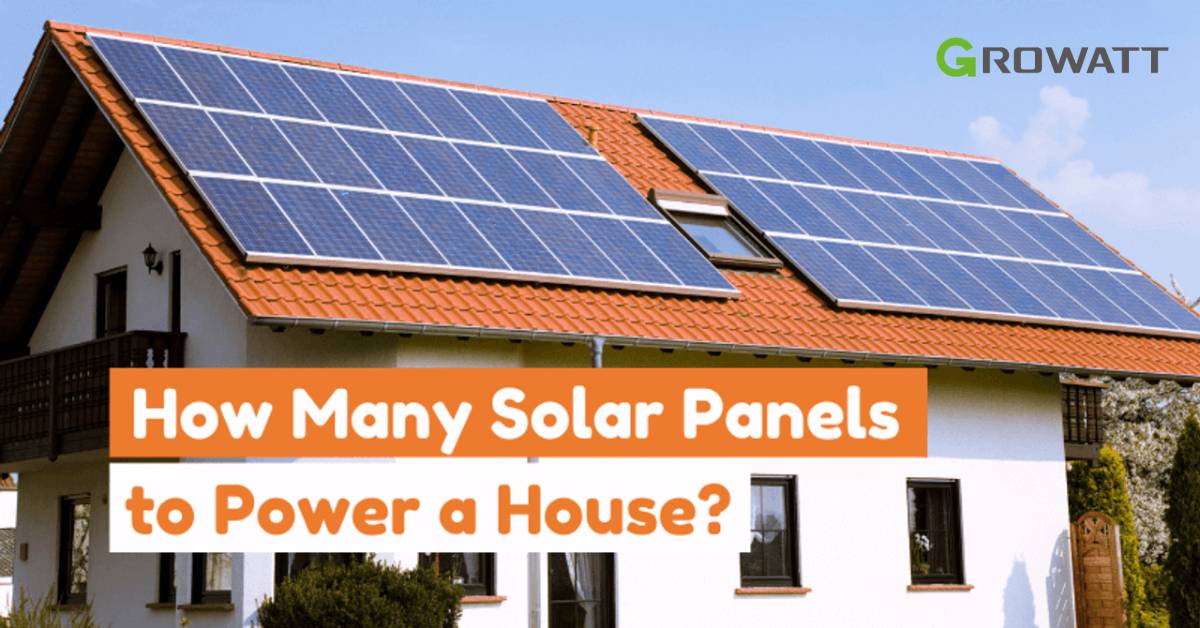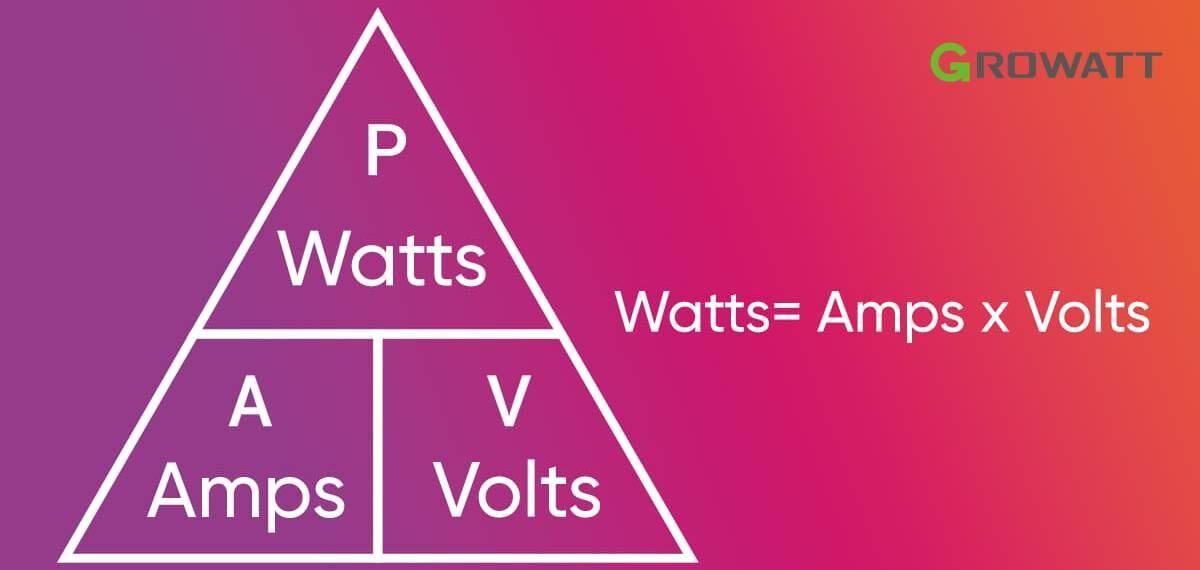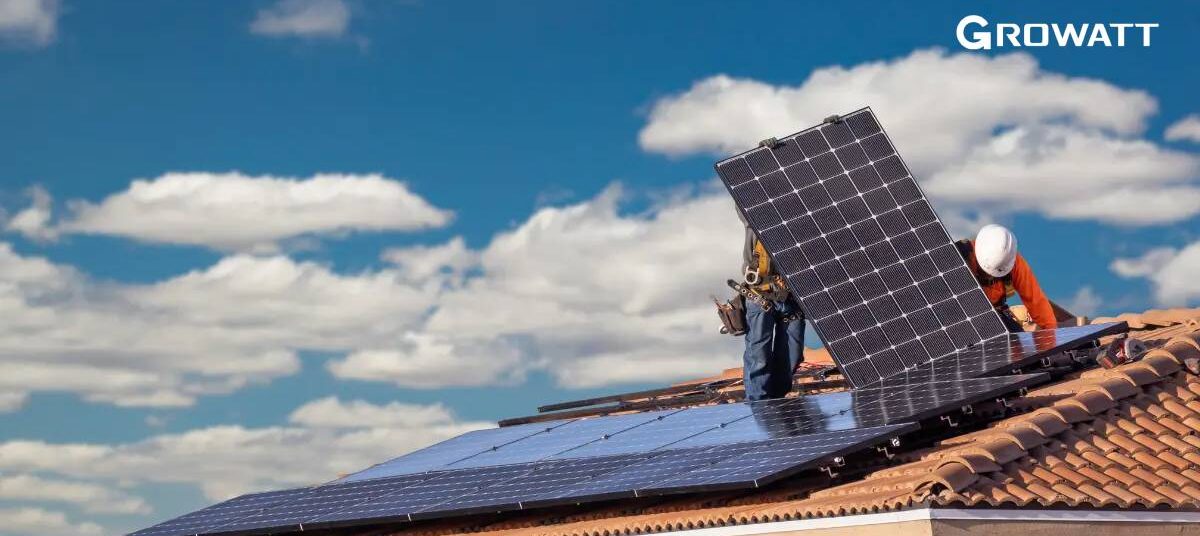As the world moves in the direction of using cleaner energy sources, individuals are now more and more moving towards using the energy of the sun to meet their energy needs. The question most asked today is: How many solar panels power a house? This will depend on a number of factors, including your household energy use, your location, and the size and efficiency of the solar panel system that you have installed. It is here that we will learn about these factors, provide useful tools such as the How Many Solar Panels Do I Need calculator, and answer common questions such as how many solar panels illuminate a house and how many solar panels can illuminate a house.
If you’re using a Growatt system, referring to the Growatt inverter manual will help you configure your solar setup efficiently and ensure maximum performance.
Getting to Know the Basics: How Solar Panels Power a House
The overall idea behind solar energy is that the sun’s rays are used to produce electricity through the use of photovoltaic (PV) panels. The size of the electricity you can generate depends on the wattage of the panel, the amount of sunlight your location receives, and the amount of energy that your residence will consume.
How Many Watts Do You Need to Power a House with Solar Panels?
To establish the number of solar panels that power a house, you first need to learn about your house’s energy demand. The typical American home consumes around 877 kWh of electricity each month (or approximately 29 kWh per day). To generate this amount of energy solely in the form of solar power, you will need to learn about your daily energy load and solar insolation in your area.
Determining Watts Required
Average House Consumption: ~29 kWh/day
Average Sunlight Hours: 46 hours/day (location dependent)
System Size Required:
System size (kW) =Daily energy consumption (kWh)Peak sunlight hours
If, for example, you get 5 hours of good sunlight each day:
295=5.8 kW
You therefore need a 5.8 kW solar system to fuel your home energy needs.
How Many Solar Panels Do I Need (Calculation)
To determine how many solar panels do I need, there are numerous web tools that will assist you. They typically require the following information:
- Your average daily or monthly usage
- Your location (to determine sunlight hours)
- Wattage of the solar panels you’re setting up
Example Calculation:
Assuming you install 300-watt panels
Total system size required: 5.8 kW (earlier)
Number of panels: 5800 watts300 watts per panel=19.33
So you’d need about 20 panels of 300W each.
Most solar shops and websites have how many solar panels do I need calculators to make things easier for you, and you can better plan your investment.
How Many Solar Panels Power a House
The query of how many solar panels drive a house is also utilized interchangeably as how many solar panels drive a home. The actual count simply varies based on your consumption and panel wattage.
Typical ranges:
|
Household Size |
Average Monthly Consumption |
Estimated Number of Panels (300W each) |
|
Small |
300-600 kWh |
8-12 panels |
|
Average |
600-900 kWh |
12-20 panels |
|
Large |
900+ kWh |
20+ panels |
Note: These are approximate estimates; actual needs differ depending on individual home energy needs and sunshine exposure.
How Many Solar Panels Can Power a House?
This is the question of the greatest capacity of your solar system. How many panels can I install on a house depends on your energy requirements and how much space you have available.
If you are going to totally phase out your use of energy, you would need a system size equal to your consumption over a year. For example:
An average American house with 1012 panels (about 34 kW) may only be paying for half of its electricity bill.
To be totally grid-independent, larger systems of 610 kW or more could be required, which is roughly the equivalent of 2030 panels.
How Many Solar Panels to Power a House Off-Grid?
For the shopper pool who wants to know how many solar panels to power a house off-grid, the calculation is more accurate because:
- Off-grid systems will need energy storage (batteries)
- Sunlight variation
- Backup power requirement
Many homeowners compare system costs by checking the latest Growatt off-grid inverter price, which offers excellent value for reliable and efficient solar performance.
Measuring how many panels you need
Supposing your home consumes 30 kWh per day, and you are installing a 4 kW system with 300W panels:
4000 watts300 watts=13.33 panels
Your off-grid setup would require around 14 panels, as well as sufficient battery storage to operate for a cloudy day or night.
How Many Solar Panels to Power a House on a Monthly Basis
Understanding how many solar panels you require to power a house on a month-to-month basis will allow you to budget your self-sufficiency and investment.
From historical consumption records:
Monthly average consumption: 900 kWh
Average daily sunlight: 5 hours
30 kWh per day energy demand : Assuming each panel is 300W
Daily energy of each panel: 300 W×5 hours=1.5kWh
Number of panels to use per day: 3001.5=20 pannels
monthly panels: 20*30=600 panel days
In practice, you’d have around 20 panels installed to meet month-to-month needs based on system efficiencies and available sunlight in the local environment.
Factors that determine the number of solar panels you need
Several factors dictate the number of solar panels you need:
|
Factor |
Explanation |
|
Household energy use |
More use, more panels |
|
Sunlight exposure |
Greater sunlight reduces the number required. |
|
Panel efficiency and wattage |
More wattage/better efficiency panels yield greater power per panel. |
|
Roof space |
Space constraints can restrict the number of panels. |
|
System losses |
Efficiency is decreased due to shading, dust, and wiring. |
|
Geographic location |
Latitude and weather conditions affect sunlight. |
|
Future energy needs |
Sizing is determined by forecasting the future increase in energy consumption. |
Knowing these factors optimizes your design for the highest efficiency and cost savings.
Growatt: A Reliable Brand for Solar Power Systems
When selecting solar panels and hardware, it is vital to select a good brand. Growatt is renowned as a leading solar product manufacturing company with extremely high-quality inverters and solar solutions that are extremely well known for extremely high-quality products. Their systems are efficient, reliable, and suitable for both off-grid and grid-tied systems.
Growatt’s advanced technology and top-notch customer service ensure that it is the most sought-after brand among professionals and homeowners. Purchasing Growatt products assures durability and peak performance, ensuring your energy needs are met with ease.
Conclusion
The capacity of the solar panels you can employ to provide power to your home is dependent on numerous things, including your household’s energy consumption, your location, and panel wattage. Understanding your needs and utilizing the how many solar panels do I need calculator and similar tools, you can design a system around your needs.
For a typical home, approximately 2030 sets of 300W panels each would be required to completely supply your home, grid-tied or off-grid. Keep in mind that sun exposure, system losses, and future energy needs are all critical considerations when planning the amount.
Invest in quality equipment from reputable companies like Growatt and get to experience enjoying reaping the benefits of your solar power system for years to come while saving energy costs and your carbon footprint.
Go solar now and begin contributing to a green future!
Note: Always engage the services of a qualified solar installer to get an equitable valuation most appropriate to your circumstances.






